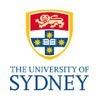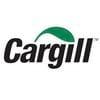Assesing Four Different Ideal Amino Acid Ratios in Isa Brown Layer Hens’ Diet During the Peak and Post Peak Production
Published: February 2, 2025
Source : M. TOGHYANI 1,3; S.P. MACELLINE 1,3; J.C. DE PAULA DORIGAM 2; P.V. CHRYSTAL 1,3; P.H. SELLE 3 and S.Y. LIU 1,3 / 1 School of Life and Environmental Sciences, Faculty of Science, The University of Sydney, Camperdown 2006 NSW, Australia; 2 Evonik Operations GmbH, Hanau-Wolfgang 63457, Germany; 3 Poultry Research Foundation, The University of Sydney, Camden 2570 NSW, Australia.
In previous assays (Macelline et al., 2022), data on egg production rate (EP) and egg mass (EM) of Isa Brown layers from 27 to 33 weeks of age (peak production -PP) and from 42 to 48 weeks of age (Post PP) were used to predict amino acid (AA) requirements by fitting linear broken-line (LBL), and quadratic broken-line (QBL) models. Subsequently, the ideal ratios of Ile, Met + Cys, Thr, Trp, and Val relative to Lys for maximal EM and EP were determined.
The current feeding study was designed to validate the two ideal AA ratios established based on LBL and QBL models against existing Evonik (AMINOHen®) and breeder recommendations. The four ratios tested are given in Table 1. A minimum ratio of 105 was set for Arg across all the four diets, and the rest of the AA were left to float in the formulations. A total of 224 Isa Brown pullet hens were allocated to individual battery cages with individual nipple drinker and trough feeder. At week 20 of age, birds were weighed and randomly allocated to their respective diets. Each of the four diets were replicated eight times with seven birds per replicate. The diets were offered ad-libitum from 20 to 44 weeks (PP) and from 44 to 75 weeks of age (Post PP). Egg production was recorded daily, and individual egg weights were measured at the end of each week. Feed consumption was measured at the end of each period on a replicate basis. During the PP and post PP, the egg production rate was not significantly affected by the diets and remained at around 98.0 and 95.0 %, respectively. Egg weight was consistently lower (3.5 %) during both phases in birds offered the diets based on LBL models, resulting in a lower egg mass (59.8 vs 62.0 PP, and 60.3 vs 63 Post PP; P < 0.05). Feed consumption and bodyweights were not affected (P > 0.05), but birds in LBL treatment tended to have the highest FCR during the peak (P = 0.067) and post peak (P < 0.05) of production. Feed cost per kg of egg was not statistically affected by diets but remained the lowest in LBL and the highest in QBL groups. In conclusion, all the four ideal AA ratios tested in this study adequately support egg production rate. However, ratios based on LBL models may potentially decrease the input feed cost per kg of eggs but are not set to maximize egg mass.
Table 1 - Amino acids requirements and ideal AA ratios during the peak and post peak of production.

Presented at the 31th Annual Australian Poultry Science Symposium 2020. For information on the next edition, click here.
S. P. Macelline, M. Toghyani, P. V. Chrystal, J. C. de Paula Dorigam, S. Greenhalgh, P. H. Selle & S. Y. Liu (2022) Poultry Science 101: 10217.
Content from the event:
Related topics:
Mentioned in this news release:


Aviagen


Show more
Influencers who recommended :
Victor Naranjo HaroRecommend
Comment
Share
25 de junio de 2025
SUPPLEMENTAL AMINO ACIDS IN BROIER DIETS
HI SIR,
I WANT TO KNOW HOW MUCH CRUDE PROTEIN WE CAN TAKE FROM SUPPLEMENTAL AMINO ACIDS OF THE TOTAL CRUDE PROTEIN OF THE DIET.
E.G.,
IF THE CP OF DIET IS 22%, THEN WHAT PERCENTAGE OF IT MAXIMUM SHOULD COME FROM CRYSTALLINE AMINO ACIDS.
best regards
anjumgojra@yahoo.com
HI SIR,
I WANT TO KNOW HOW MUCH CRUDE PROTEIN WE CAN TAKE FROM SUPPLEMENTAL AMINO ACIDS OF THE TOTAL CRUDE PROTEIN OF THE DIET.
E.G.,
IF THE CP OF DIET IS 22%, THEN WHAT PERCENTAGE OF IT MAXIMUM SHOULD COME FROM CRYSTALLINE AMINO ACIDS.
best regards
anjumgojra@yahoo.com
Recommend
Reply

Would you like to discuss another topic? Create a new post to engage with experts in the community.



















